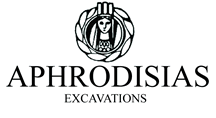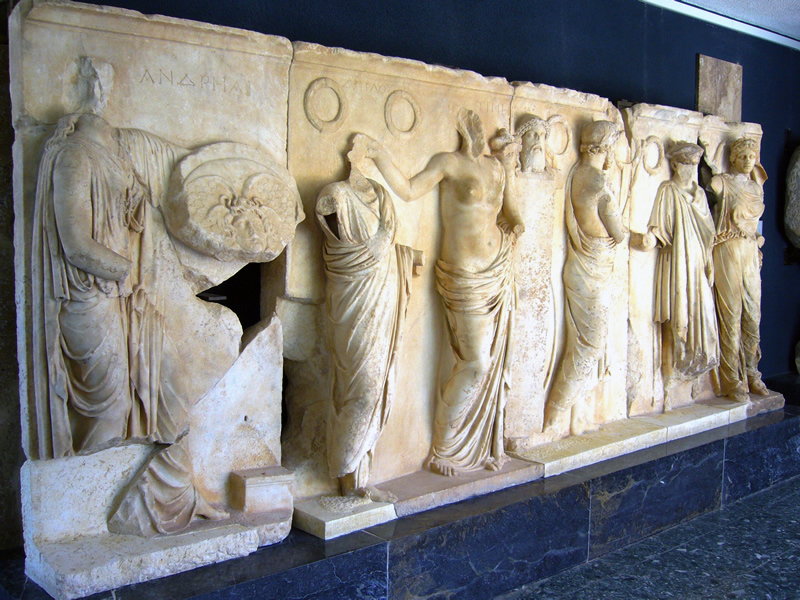Zoilos Frieze
The large figured reliefs from a tomb monument to C. Julius Zoilos, a great benefactor of Aphrodisias who lived in the time of Julius Caesar and Augustus, were discovered in 1956 and succeeding years. They were restored once in 1979, and were re-restored and installed in their correct sequence in a new display in the Aphrodisias Museum in 1993-1994. The frieze is the earliest figured marble monument in the city.
C. Julius Zoilos had an extraordinary career. A native of Aphrodisias, he was enslaved and spent much of his life away from the city. Eventually he was freed and became the freedman and trusted agent of Octavian, later called Augustus, the first emperor of Rome. Zoilos returned to Aphrodisias in c. 40 BC an extremely wealthy man, and played a prominent role in the life of the city. He was priest of Aphrodite and paid for at least three major marble buildings: the first phase of the temple of Aphrodite, the elaborate stage building of the theatre, and the north colonnade of the Agora in the city centre. He was honoured at Aphrodisias with at least two public statues, and died sometime after 28 BC. He was also honoured with the monumental tomb which the frieze decorated.
Nothing of the tomb building itself has been found, but it can be deduced that the frieze occupied the sides of a square mausoleum. It presents an allegorical account of Zoilos’ life and virtues. The main preserved frieze is composed of two groups of three figures, all identified by inscriptions. Zoilos himself is seen in two different costumes in the centre of each group. In the left-hand group Bravery (ANDREIA) presents a shield to Zoilos, who wears a Roman toga, while Honour (TIMĒ) crowns him from the right. The scene celebrates Zoilos’ military courage and his status as a Roman citizen. In the right-hand group, the personification of the People (DĒMOS) stretches out his hand to greet Zoilos, who wears a long travelling cloak and cap, while the City (POLIS) crowns him from behind. This scene is an elevated representation of Zoilos’ return home from Rome. Subjects represented in other surviving panels included: Eternity (AIŌN), Roma (inscription not preserved), Remembrance (MNĒMĒ), Minos, judge in the underworld (MEINŌS), Excellence (ARETĒ), and Loyalty (PISTIS).
Found at: City Walls







